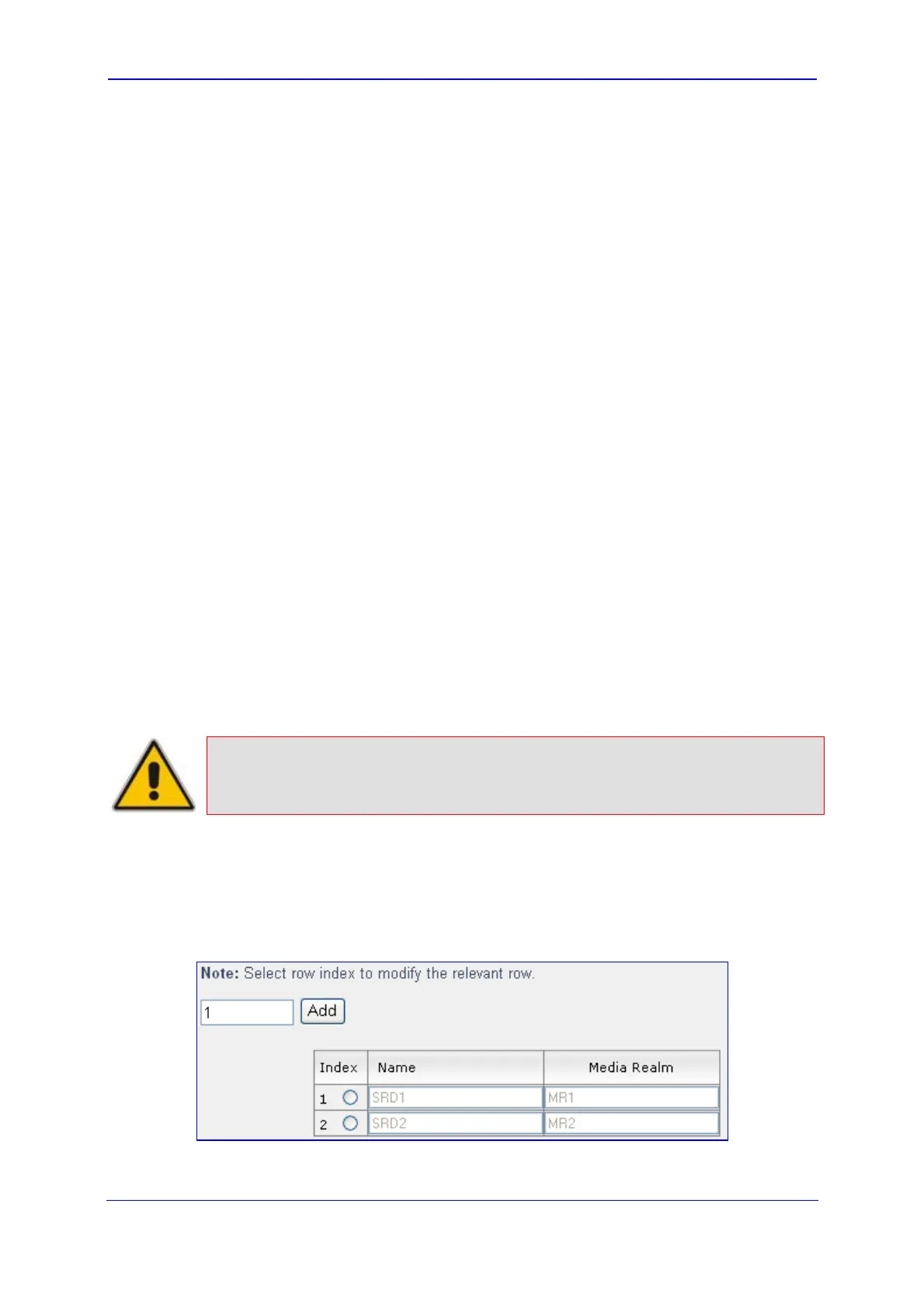Version 5.8 181 October 2009
SIP User's Manual 3. Web-Based Management
3.4.5.8.2 Configuring the Signaling Routing Domain Table
The 'SRD Table' page allows you to configure up to five signaling routing domains (SRD).
An SRD is a set of definitions of IP interfaces, device resources, SIP behaviors and other
definitions that together create (from the IP user’s perspective) from one physical device,
multiple virtual multi-service gateways.
SRD provides the following:
Multiple, different SIP signaling (SRD associated with a SIP Interface) and RTP media
(associated with a Media Realm) interfaces for multiple Layer-3 networks. Due to the
B2BUA nature of the SBC application, different interfaces can be assigned to each leg
of the call, and between the LAN side and the WAN side.
Ability to operate with multiple gateway customers that may reside either in the same
or in different Layer-3 networks as the device. This allows separation of signaling
traffic between different customers. In such a scenario, the device is configured with
multiple SRD's.
Typically, one SRD is defined for each group of SIP User Agents/UA (e.g. proxies, IP
phones, application servers, gateways, softswitches) that communicate with each other.
This provides these entities with VoIP services that reside on the same Layer-3 network
(must be able to communicate without traversing NAT devices and must not have
overlapping IP addresses). An SRD is generally configured for the LAN and one for the
WAN.
Routing from one SRD to another is possible, whereby each routing destination (IP Group
or destination address) must indicate the SRD to which it belongs.
The configuration of an SRD includes assigning it a unique name and assigning it a Media
Realm (media port range associated with a Media IP interface, defined in the 'SIP Media
Realm' table) as well as associating it with a SIP Signaling interface. Once configured, the
SRD can then be assigned to an IP Group (in the IP Group table) and to a Proxy Set (in the
Proxy Set table).
Note: The 'SRD' table can also be configured using the ini file table parameter SRD
(refer to ''SBC Parameters'' on page 383).
¾ To configure the SRD table:
1. Open the 'SRD Table' page (Configuration tab > Protocol Configuration menu >
SBC submenu > SRD Table).
Figure 3-156: SRD Table Page
2. Add an entry and then configure it according to the table below.

